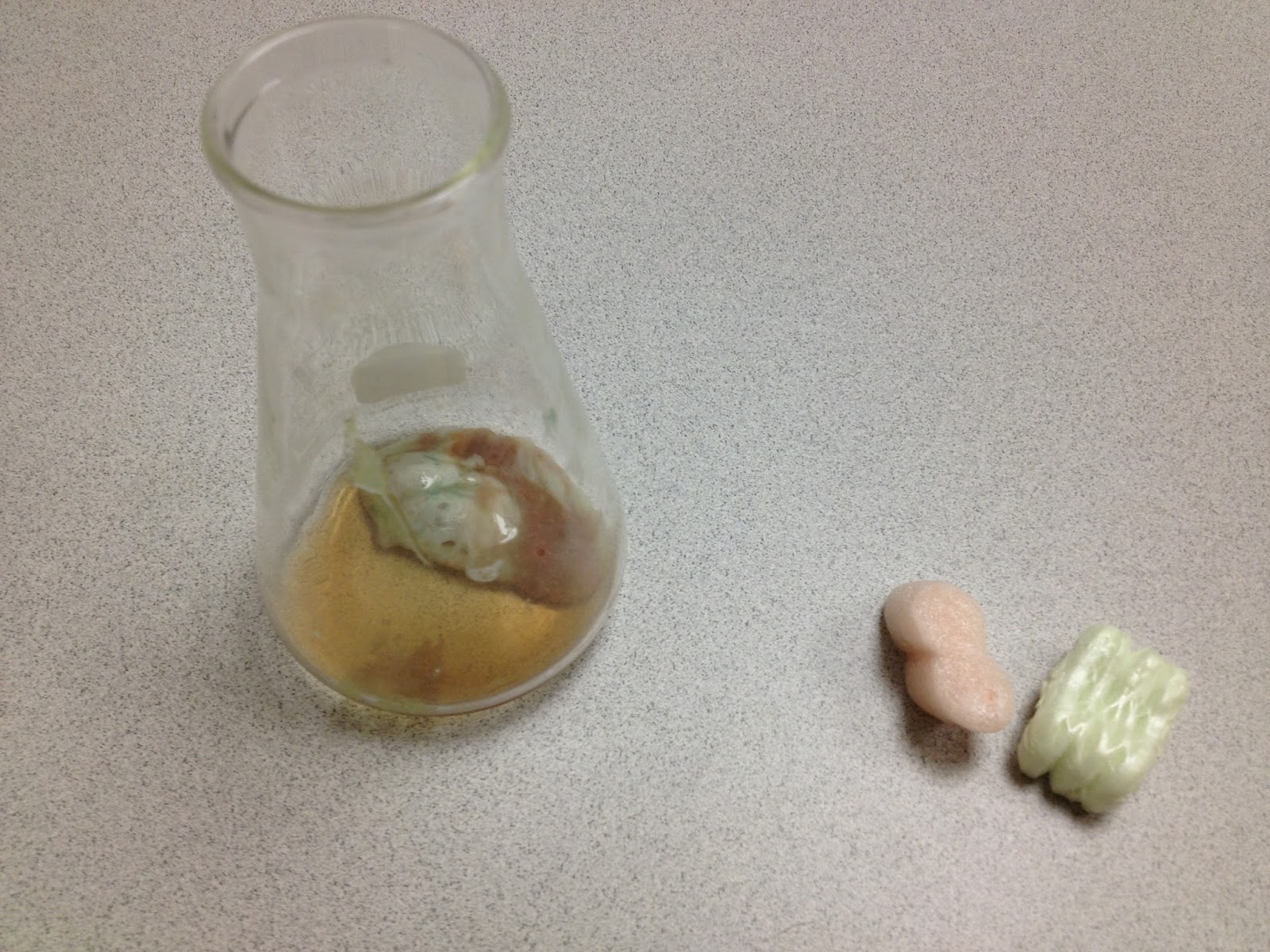Mad Science Workshop:
Dirt on Garbage 7/18
In pairs, the students pieced together a timeline of what they predicted how long each item would take to decompose. The shortest span? Paper. Longest? Styrofoam, which NEVER decomposes.
Next, students took a look at landfills. What are some "ingredients" in a landfill? Soil, clay, gravel, plastic, soil liner, and trash.
We took a look at how water absorbs sand and clay differently.
Then, we added a layer of gravel.
This is what it might look when chemicals from our garbage seep through the soil. The aftereffects? Polluting our water supply.
We learned that landfills are NOT the best solution when it comes to holding our garbage. It is not a great place for garbage to decompose because it lacks water, heat, and air.
Plastic bags are one of the items that takes hundreds of years to decompose. Electric Ed showed us a special type of plastic made of PVA. This plastic is water soluble and can decompose much more quickly as we saw and felt!
It feels squishy!
Though styrofoam can't decompose, Electric Ed showed us a little trick that helps us to shrink the styrofoam so it doesn't take up as much room...using nail polish remover (aka acetone).
Did you know the main ingredient in styrofoam is air?
Real styrofoam "feels like clay" according to Kira.
Ecofoam is a better solution to styrofoam. This can decompose. Using some water, the students dampened paper towels and used it to help stick the ecofoam together to create an art piece. Their creative minds were at work!

























No comments:
Post a Comment